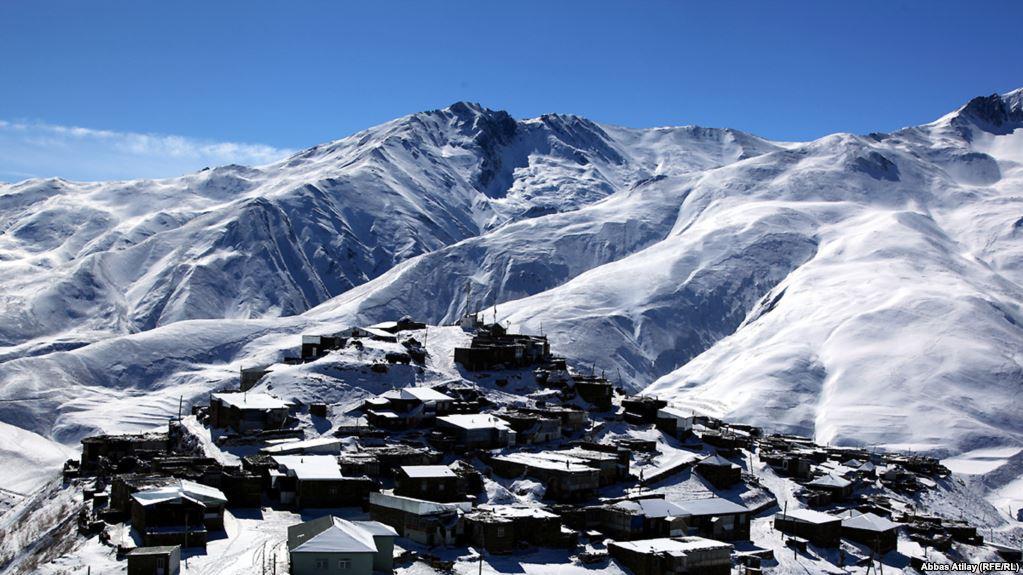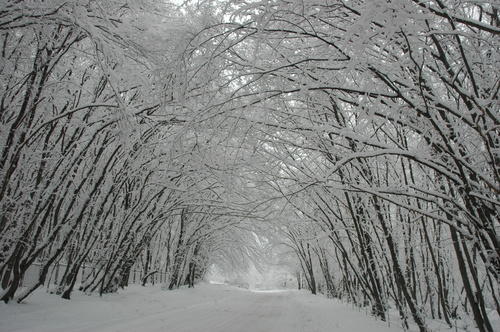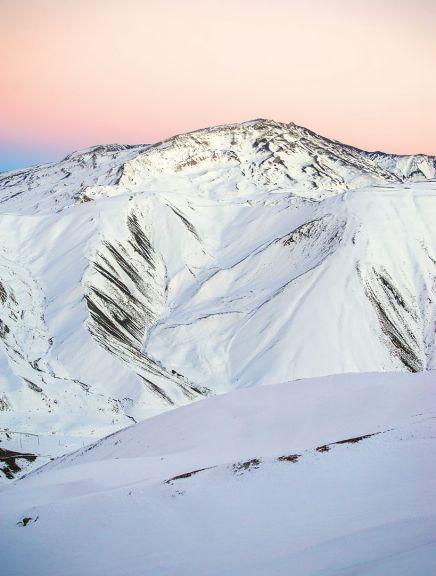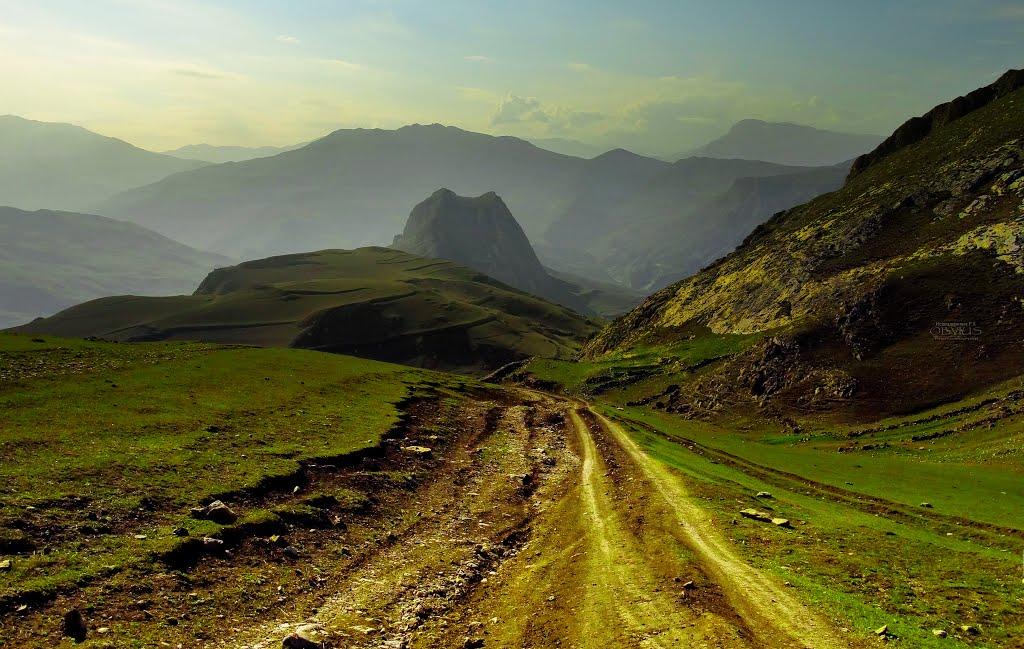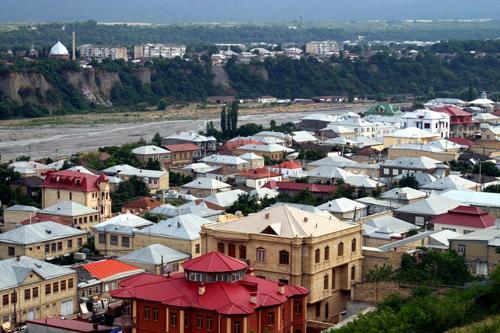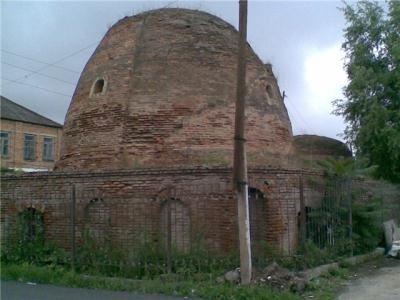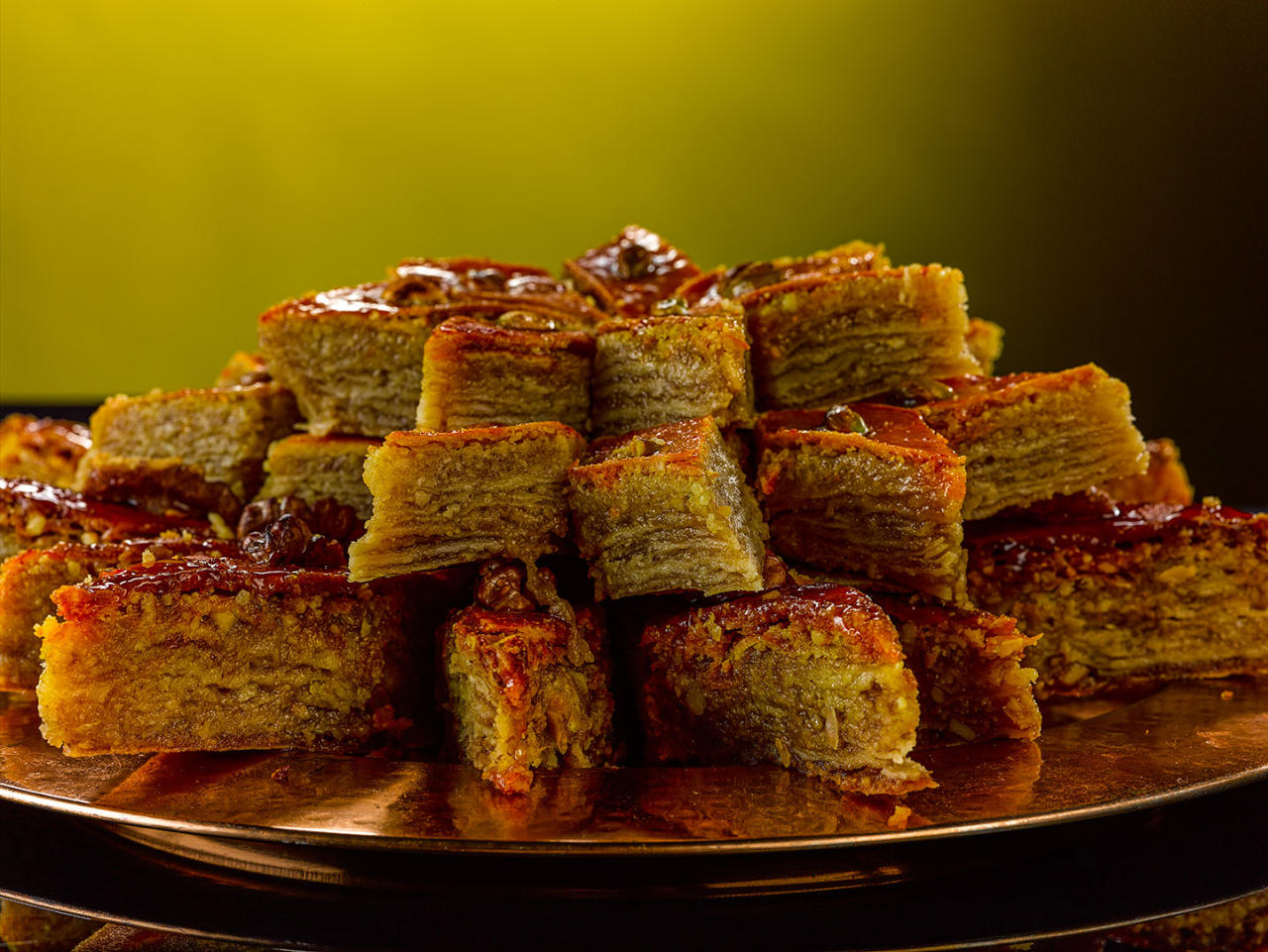Winter guide to Azerbaijan: mountainous Guba
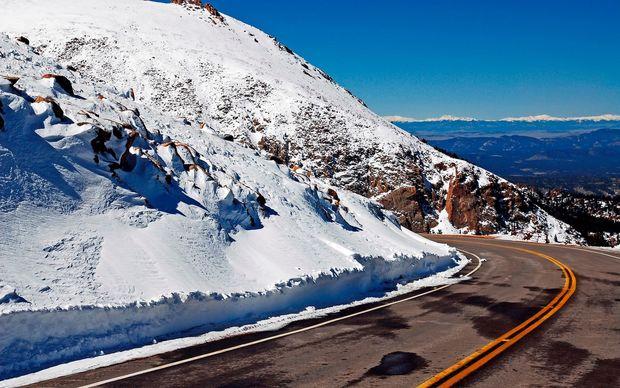
By Aygul Salmanova
Winter has crept up unnoticed, and for those who like to travel when a snowstorm is flying past the window, it is time to decide on which places to visit. So, if you are one of those who joyously looks forward for winter vacation all year long, Azerbaijan is one of winter wonderlands worth visiting.
Winter’s best peculiarities are on full display in the country: fresh snowfall in mountainous regions, beautiful landscape, variegated cuisine with delectable seasonal dishes and drinks that warm you inside.
One of such places is northern region of Azerbaijan, Guba, where you will get that rosy-cheek feeling which braces you up after time spent in fresh air followed by a hot drink - in our case, a cup of tea with delicious Guba pakhlava.
If you have accomplished the first step by choosing Guba as your next destination, the following is to decide on which parts of the region to visit.
Khinalig
Would you like to drop in on and relish mesmerizing views of an insulated village inclined in a picturesque mountainous region of Azerbaijan?
Get ready to be enchanted by this mountainous village, which is completely isolated from the rest of the country. The mountains and landscape throughout the road to Khinalig enthrall you, and the higher you climb, the more breathtaking it is becoming.
Because the village is sequestered in outlying locations, it has preserved ancient architectural and cultural traditions.
When you finally arrive in the village, instead of looking for museums, shops, or other attractions typical for most of tourist destinations, explore the distinguishable lifestyle of local inhabitants. These people, who speak language quite original and different from that spoken in other parts of the country, are considered as the main attraction of this place.
About 2,000 inhabitants live in the village and all of them are indigenous and divided into four genera. Each genera has its own cemetery, its patterns for carpets and clothes. They profess Islam, and before Islam they were fire-worshipers. This is evidenced by the temples of fire and some semi-lingual traditions that have nothing in common with Muslims.
One of the most eye-catching features of the village is the presence of a number of ancient stone houses, built of cobblestones, that sculpt peculiarly ascetical stepped terraces up a mountain ridge. This intoxicating view is often magnificently wrapped in uncanny clouds from where you can enjoy views of the environing Caucasus.
The most vivid of all about the ancient antiquity of the village is its eight large cemeteries, the area of which is much larger than the territory of Khinalig itself. There are burials in three or even four layers, and you can see inscriptions on different alphabets on tombstones.
Winter here is early and very severe with the temperature reaching up to -30⁰ C. Bricks made from a mixture of straw and manure serve as a fuel in freezing winter days. They not only burn well, but also give enough heat.
The village is also rich with ancient architectural monuments such as feasts with graves, caves and unexplored archaeological sites, some of which were built in the Middle Ages: the tomb of Khidir Nebi, the Sheikh Shalbuz mosque, the Abu Muslim mosque (12th century), the Pirjomiard mosque (1388).
In 2006, the life of this unique mountainous village changed as a new asphalt road was constructed. Once an isolated village became one of favorite destinations of tourists coming to Azerbaijan, and the local residents themselves got the opportunity to travel outside the village.
Red Village - Jerusalem of Caucasus
Another place worth visiting when you are tired of bright city lights and noisy crowds: walk along the peaceful streets of the Red Village and chow down with local people some of their unique tastes.
Located on the left bank of the Kudilai River in the north-eastern part of the Greater Caucasus mountains, this small settlement is the only community of mountain Jews in the CIS.
Mountain Jews who settled in the Caucasus more than 2,000 years ago and arrived in Azerbaijan only in the 5th century, spoke the language of the Iranian group – djukhuro, and had a local social system known as a community (kagal) ruling all spheres of life of mountain Jews. When in the 18th century, after the Jewish settlements were destroyed by the Persian King Nadir-Shah, they began to search for new places and finally settled in the land opposite the Guba city know as Krasnaya Sloboda (Red Village).
The village is one of the most interesting places of Azerbaijan. Jews living here differ from the typical Caucasian people and those living in neighborhood from mainly in religious rituals. Additionally, they got the ability to weave carpets which is either inherited from the Persians, or during the exchange of experience with the Azerbaijanis.
Another exceptional fact about these people is the fact that they talk not in Hebrew and not in Yiddish, but in their own language djukhuro, translated as ‘Jewish’.
Red Village or Krasnaya Sloboda not only preserved its uniqueness throughout the hundreds of years, but also obtained the status of the state monument. The place is another prominent village of Guba having remarkable history and uncommon culture.
It should also be noted that this village is well-known for its inhabitants and sometimes is called as the place where rich Jews are born as a great number of those living here are famous politicians, scientists or other well-known figures in different parts of the world.
Ancient mosques
Sakina Khanum Mosque
This mosque was built in 1854 by the widow of Bakikhanov, a famous Azerbaijani figure, scholar and writer in memory of her deceased husband. The mosque, built of red brick and shaped like a faceted cylinder, impresses the visitors with its monumentality.
Each facet of the mosque has a window in the form of a semicircular arch and its facade is surrounded by an original eaves made from small bricks at the top. This mesmerizing building is crowned with a white metal dome in the shape of a multi-faceted helmet, the top of which is adorned by an elegant spike.
Juma Mosque
Built in the 19th century, this mosque has a construction, which is typical only for the mosques of Guba region.
The mosque looks like a faceted cylinder: it has the form of a regular octagon having a huge hall crowned with a big 16 m diameter dome.
After the construction of Juma Mosque in the region, similar constructions were also erected in other parts of Azerbaijan.
Mausoleums
Mausoleums of Agbil
The Agbil settlement of Guba region is a place where three mausoleums dating back to the 17th century were found two of which are traditional rectangular structures, while the third mausoleum is completely distinct due to its eccentric architecture.
This small square building constructed from the burnt bricks placed in an octagonal stone pillar, looks like an octahedron with a high dome and wide portal entrance from the outside, and from the inside it is an ordinary square room.
--
Follow us on Twitter @AzerNewsAz
Here we are to serve you with news right now. It does not cost much, but worth your attention.
Choose to support open, independent, quality journalism and subscribe on a monthly basis.
By subscribing to our online newspaper, you can have full digital access to all news, analysis, and much more.
You can also follow AzerNEWS on Twitter @AzerNewsAz or Facebook @AzerNewsNewspaper
Thank you!

